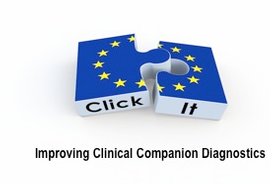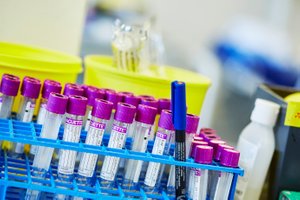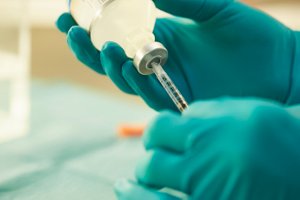Companion diagnostics are crucial for drug development and disease management with regard to patient selection, therapy, planning and monitoring. Nanomedicines such as antibodies have been proven to be optimal disease-targeting agents because they generally exhibit superior target uptake and retention. However, to date, nuclear imaging of nanomedicines has been limited to the use of long-lived isotopes to be compatible with the slow pharmacokinetics of these large molecules. Major drawbacks are high radiation doses, precluding routine and repeated companion imaging procedures.
The Click-It consortium aims to circumvent this issue by using pretargeting approach, which centers on the administration and target binding of a tagged nanomedicine followed by administration and binding of a small, fast-clearing, short-lived radiolabeled probe to the tag of the nanomedicine. This results in lower absorbed radiation doses and in a boost in target-blood ratios, which in turn leads to superior imaging contrast. PET scan snapshots at multiple time-points provide long-term imaging information by applying short-lived nuclides. So far, only the fastest click reaction, the tetrazine ligation, has demonstrated potential in clinical relevant conditions. Recently, we have shown in a SPECT imaging study that this click reaction can be applied for non-internalizing nanomedicines in vivo.
This project aims at expanding the scope of click-retargeted imaging to intracellular targets, because a majority of nanomedicines internalize and is thus not accesssible with the current approach. Furthermore, we will expand our approach to short-lived, non-metal based, small molecular 18F-FDG tracers, since PET offers a higher spatial and temporal resolution enabling quantitative decision making in disease diagnosis and management. Finally, the project aims to translate the developed clic-retargeting technology into a clinical applicable nano medicine-based imaging approach in canine patients.
Click to see an animation of the Click-It pre-targeting principle:




